Museo de Antioquia is the most popular museum in Medellín. In addition, it’s considered one of the city’s top tourist attractions.
Inside the museum are about 100 pieces of artwork donated by World-renowned Colombian artist Fernando Botero. The museum also includes pre-Colombian, colonial and modern art collections.
Museo de Antioquia is located in El Centro next to Plaza Botero, which has 23 abstract bronze sculptures created by Fernando Botero. Most notably, we also included Museo de Antioquia along with Plaza Botero in our recommended tourist itinerary for a day in Medellín.
In addition, we included Museo de Antioquia in our list of the 12 best Medellín museums. Note the above photo of Museo de Antioquia is by Jenny Bojinova.

Inside Museo de Antioquia, photo by Jenny Bojinova
History of Museo de Antioquia
Museo de Antioquia was originally founded in 1881. However, it was not located at its current location.
The history of the current Museo de Antioquia building is related to Plaza Botero located in front of the museum. In 1997, the museum that was not at its current location was heavily in debt and had few visitors. And survival of the museum was even in question. But famous Colombian artist Fernando Botero had made a promise of a donation if the museum grew.
A new director of the museum, Pilar Velilla, contacted Botero. And Botero promised to donate a sculpture room, a painting room and a drawing room if the museum was to be in a new location. In addition, the governor of Antioquia, Álvaro Uribe Vélez, and the mayor of Medellín, Sergio Naranjo, at the time supported the project. Finally, a search for a new building started.
A new mayor was elected in Medellín in 1998, Juan Gómez Martínez, who also supported the project. Furthermore, he made the decision to use the old Municipal Palace for the museum. The idea of renovating the building to support the museum grew and become a banner project to change a deteriorated part of El Centro in Medellín. In addition, the idea of Plaza Botero was proposed along with the museum.
The museum at its current location opened on October 15, 2000. To construct Botero Plaza in front of the museum, it was necessary to demolish an entire block of buildings located there. So, the demolition and construction of the plaza was accomplished in 1999 and 2000. The first stage of Botero Plaza was inaugurated in 2000. Finally, the complete inauguration took place in 2001, with the current 23 statues.
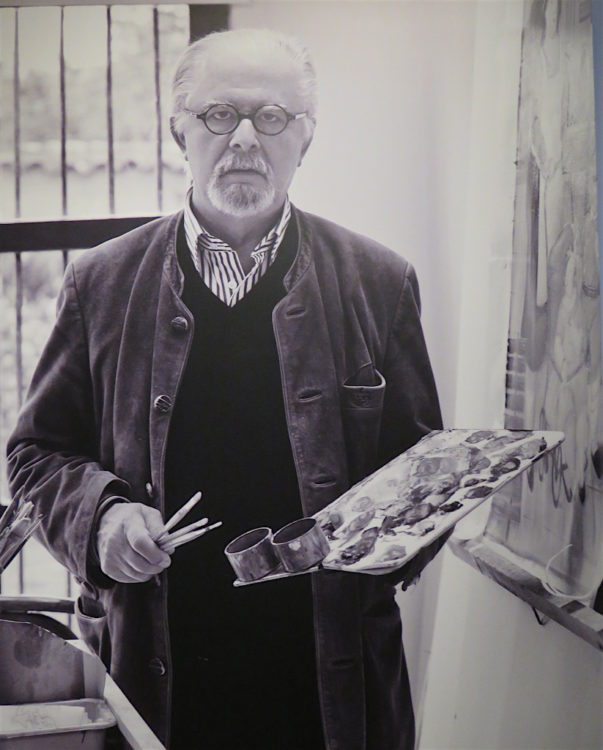
Fernando Botero
Who is Fernando Botero?
Fernando Botero is a figurative artist and sculptor who was born in Medellín on April 19, 1932. Most notably, his signature style, known as “Boterismo”, depicts figures in large, exaggerated volume (chubby, full-figured or fat people). His is still alive and the World-renowned artist is considered the most recognized living artist in Latin America.
Botero’s first works were exhibited in Medellín in 1948. He moved to Bogotá in 1951. In 1953, he moved to Paris, where he spent time studying artwork in the Louvre. He also lived briefly in Florence, Italy where he studied the artwork of Renaissance masters. In the past several decades Botero has lived in Paris. And each year he spends about a month in his hometown of Medellín.
Botero has achieved international recognition for his paintings, drawings and sculptures, with exhibitions across the world. Botero has more than 50 exhibits in major cities worldwide. As of result of his fame and limited availability due to many art pieces donated to museums, his work can command selling prices in the millions of dollars.
Touring Museo de Antioquia
The staff of the museum recommends starting on the third floor of the museum, which has the museum’s collection of Fernando Botero paintings and sculptures. I agree with this recommendation. I believe that starting on the third floor is best and working your way down.
You will find about 100 pieces of artwork from Botero in the museum. There is also a small room, which has some history of the artist with some photos. Here are photos of six of the Botero artwork pieces you’ll see in the museum:

Our Lady of Colombia, 1967 by Fernando Botero, photo by Jenny Bojinova
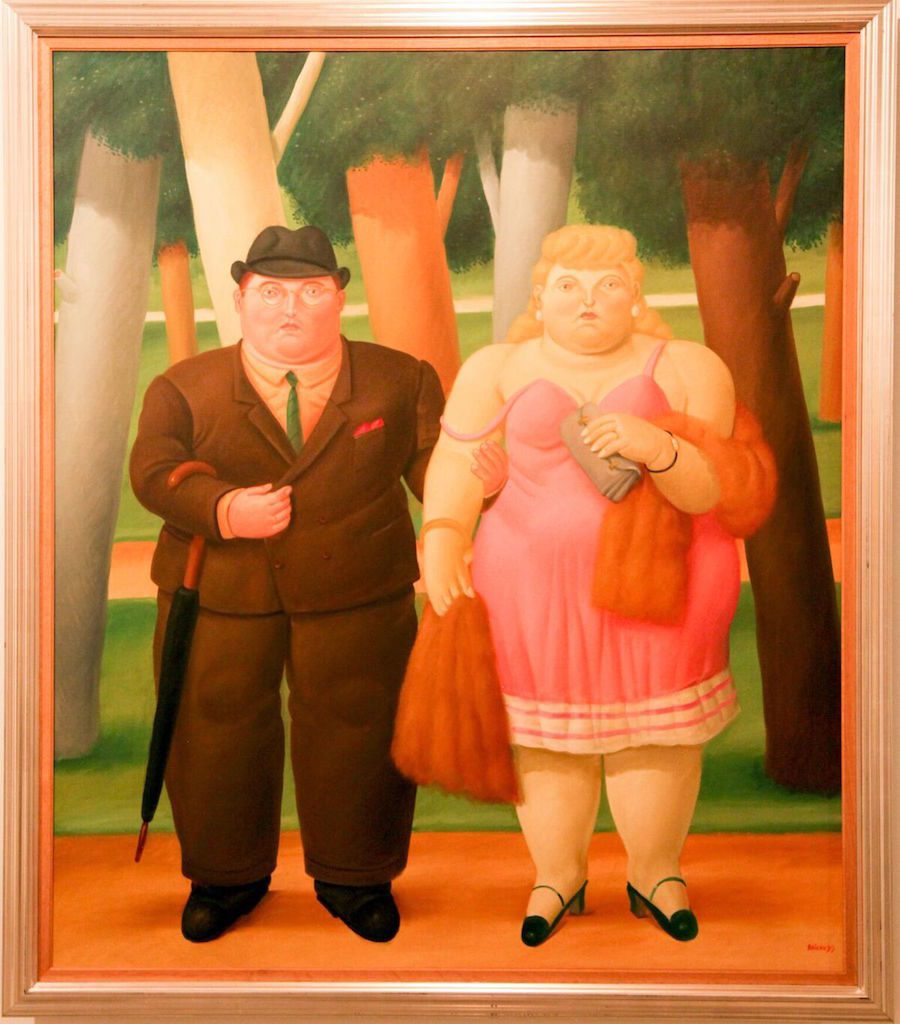
A Couple, 1999 by Fernando Botero, photo by Jenny Bojinova

Pablo Escobar Dead, 2006 by Fernando Botero, photo by Jenny Bojinova

Car Bomb, 1999 by Fernando Botero, photo by Jenny Bojinova
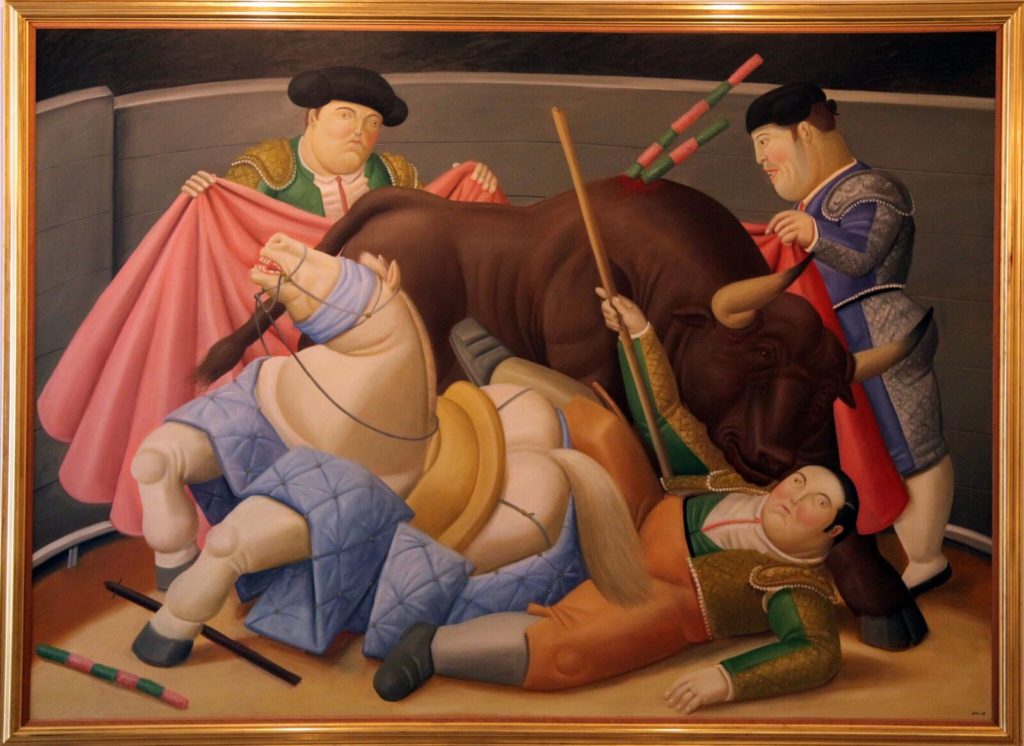
The Quita, 1988 by Fernando Botero, photo by Jenny Bojinova

Column with Bird by Fernando Botero
The museum contains a number of additional exhibits, including halls featuring religious and colonial art, international artists and modern art, among other artwork and exhibitions in the museum. Here are photos of six additional pieces of artwork you will see in the museum:

Grey Scrambler Double, 1968 by Frank Stella from the U.S., photo by Jenny Bojinova

Concert Expansion, 1991 by Armand Fernádez from the U.S.

The Procession, 1941 by Débora Arango, photo by Jenny Bojinova

The Ironer, 1938 by Eladio Vélez, photo by Jenny Bojinova
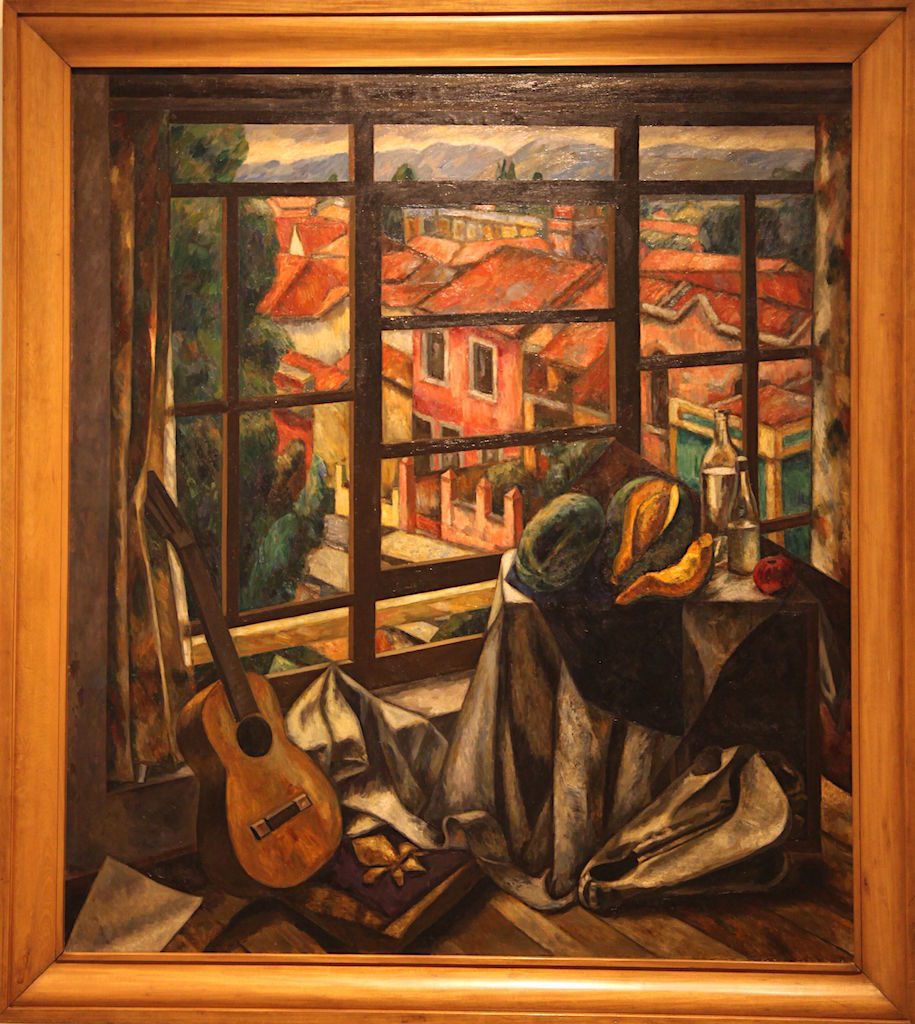
Nature in Silence, 1942 by Carlos Correa, photo by Jenny Bojinova

Dante and Vigil in Hell, 1919 by Pedro Alcantara Quijano Moreno, photo by Jenny Bojinova
Also in Museo de Antioquia
Inside the museum there is also a courtyard as well as several meeting rooms. The museum also has a gift shop on the first floor, which sells local craftwork, art supplies and replicas of some of the artwork in the museum.
Outside of the museum on the first-floor terrace is a restaurant/café with some good food.

Courtyard in Museo de Antioquia, photo by Jenny Bojinova
How Much Does it Cost to Enter?
Tickets to enter Museo de Antioquia cost 18,000 pesos for foreigners or 12,000 pesos if you are a Colombian citizen or a foreigner resident with a cedula. Furthermore, if you live in an estrato 1, 2 or 3 neighborhood and bring a utility bill, entrance to the museum is free.
Also, there is a 50 percent discount if you are over 60 years old or a student (includes foreign students). And a 30 percent discount is available for groups of five or more people.
In addition, a hand-held audio guide (in Spanish or English) is available, which tells you more about some of the individual artwork in Museo de Antioquia.
The museum is also handicap friendly with a ramp for wheelchairs and it has an elevator inside.
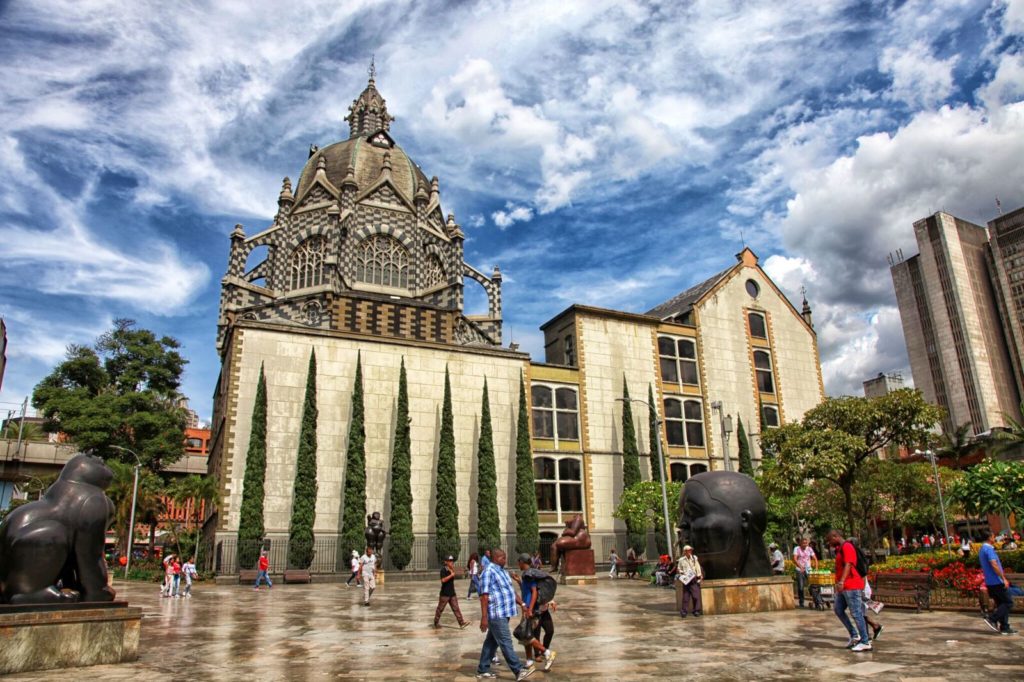
Plaza Botero and Rafael Uribe Uribe Palace of Culture, photo by Jenny Bojinova
How to Get to Museo de Antioquia
Museo de Antioquia is conveniently located a very short walk from the Parque Berrio metro station on Line A. In front of the museum is Plaza Botero and Rafael Uribe Palace of Culture.
In addition, taxis are an alternative way to get there. You can ask any taxi driver to take you to Museo de Antioquia. Every driver in the city will know where it is. And it is normally relatively easy to catch taxis on the street outside the museum.
During the day, there will be many tourists in the area taking photos. But still take care to watch your valuables. There is normally a noticeable police presence, so it is relatively safe. However, keep in mind that street crime is common in El Centro, particularly after dark.
Address: Carrera 52 # 52-43, El Centro
Website: https://www.museodeantioquia.co/
Phone: +57 4 251 3636
Hours: Monday to Saturday: 10:00 am to 5:30 pm; Sunday and Holidays 10:00 am to 4:30 pm
Museums in Medellín
On the Medellin Guru website, we have looked at 17 different museums in Medellín:
- Museo de Antioquia – the most popular museum in Medellín, worth visiting. It’s best known for a collection of art of Medellín-born artist Fernando Botero.
- Medellín’s Museo de Arte Moderno (Modern Art Museum) – worth a visit with an intriguing mix of exhibitions located in a striking building.
- Parque Explora – Medellín’s popular interactive science museum and aquarium. It has over 300 activities and the largest freshwater aquarium in South America.
- Jardín Botánico – Medellín’s free botanical gardens that is also considered a museum with over 1,000 different living plants on display.
- Planetario de Medellín – Medellín’s Planetarium and space museum that is very popular and worth seeing, particularly with kids.
- Museo El Castillo – Medellín’s beautiful Gothic-style castle that is a museum.
- Museo Cementerio San Pedro – a cemetery that is also a popular museum in Medellín worth visiting. It also has a church with many beautiful stained-glass windows.
- Museo Casa de la Memoria – a museum dedicated to honoring the victims of urban conflict in Medellín and Colombia and is worth seeing to better understand the city and country.
- Museo del Agua – the popular Medellín water museum.
- Casa Museo Otraparte – a hidden gem in Envigado consisting of a museum, cultural space and café dedicated to the life and works of Colombian philosopher Fernando González.
- Museo Universidad Antioquia (MUUA) – a Medellín museum located on the University of Antioquia’s campus with a huge collection of nearly 40,000 archaeological and natural history pieces.
- Museo Casa Gardeliana – a museum located in Medellín that is dedicated to tango music and musician Carlos Gardel.
- Pedro Nel Gómez Casa Museo – a museum located in Aranjuez that is dedicated to the life and works of important Colombian artist Pedro Nel Gómez who is best known for his extensive work as a muralist.
- Museo Etnográfico Miguel Angel Builes – a hidden gem museum in Medellín dedicated to showing the cultural diversity of indigenous and ethnic groups in Colombia.
- Rafael Uribe Uribe Palace of Culture – Medellín’s palace in El Centro is one of the most photographed buildings in the city. It’s considered a museum by the city of Medellín but there aren’t very many exhibits to see inside.
- Museo Entomológico Piedras Blancas (MEPB) – an insect museum located at the Parque Ecológico Piedras Blancas, which is an ecological park located in Santa Elena near Medellín.
- Museo de Ciudad – Medellín’s City Museum, which is located next to Pueblito Paisa. This museum has a scale model of the city and a photo exhibit with photos from the 1890s to about 1950 showing the history of the city of Medellín.
The 10 English-language Colombia guidebooks that I have are missing several of these museums. And each guidebook only includes six to nine out of the 17 museums in Medellín we have looked at.
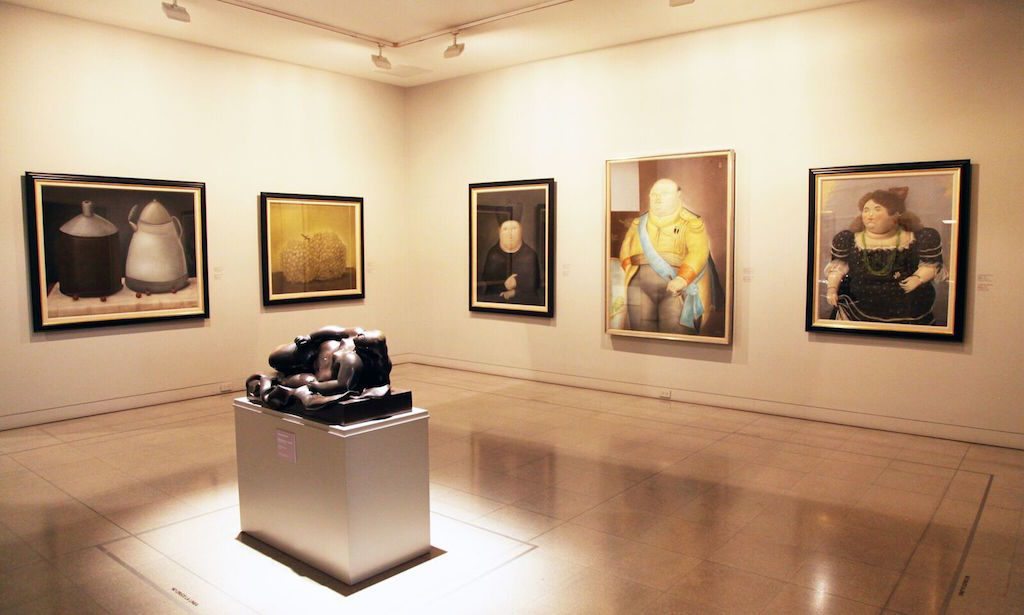
Inside Museo de Antioquia, photo by Jenny Bojinova
The Bottom Line: Museo de Antioquia
No visit to the city of Medellín would be considered complete without visiting Museo de Antioquia and Plaza Botero located in front of the museum. Museo de Antioquia is considered one of the top attractions in the city of Medellín.
When my father visited earlier this year he was impressed with the museum and said it was definitely worth visiting. We spent a couple hours in the museum and outside taking photos of Botero’s bronze sculptures in Plaza Botero.
Sign up for the Free Medellin Guru Newsletter – You can see all of the previous Medellin Guru weekly email newsletters and sign up here.

